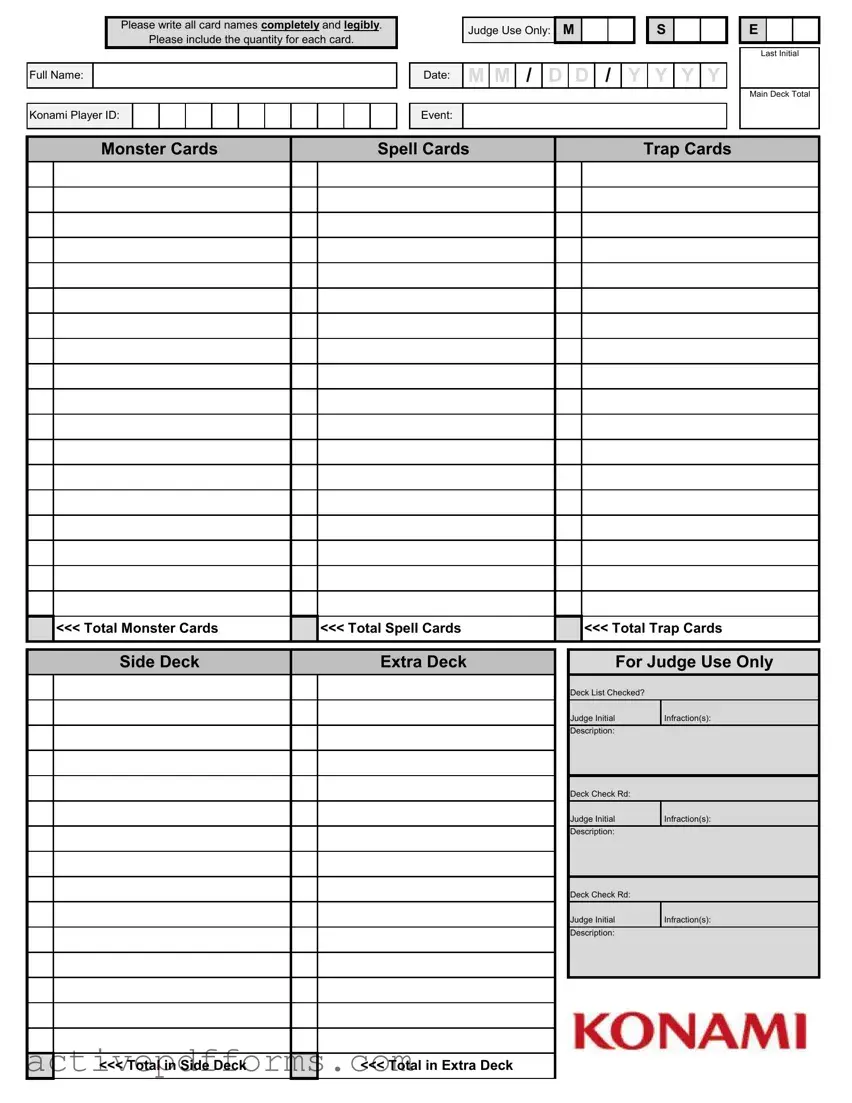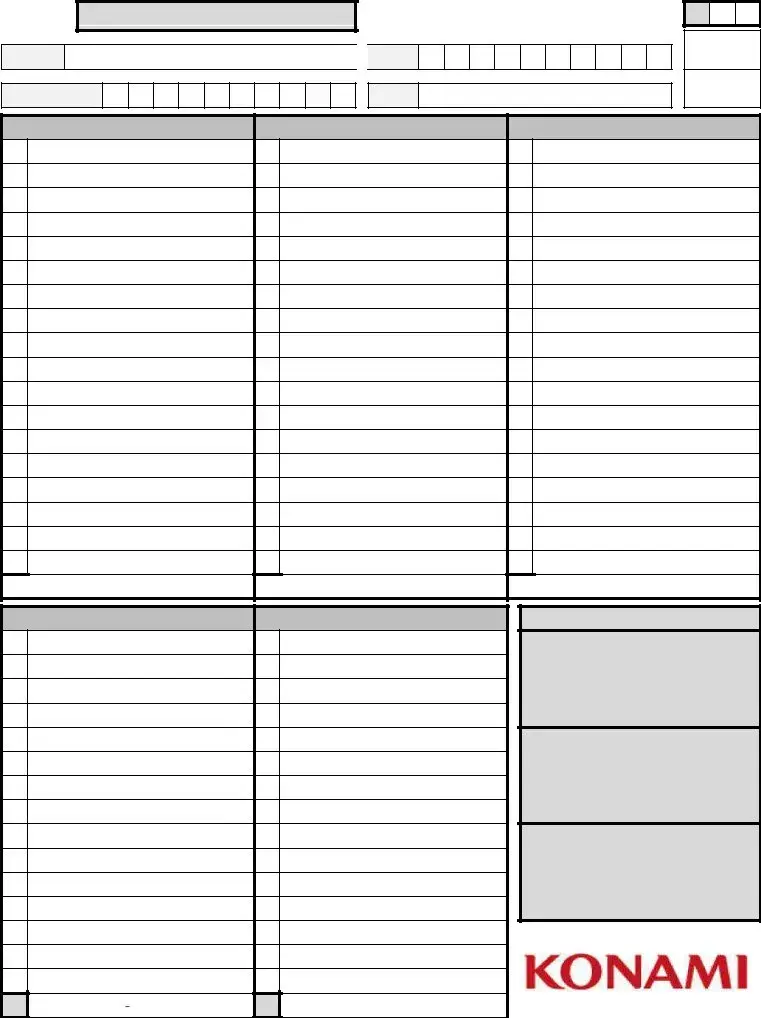The Konami Decklist form serves as a critical tool in the organization and execution of official Yu-Gi-Oh! trading card game tournaments. It requires players to meticulously detail their deck composition, ensuring all card names are fully written out and legible, alongside the specific quantity of each card included. This comprehensive form not only includes sections for the player's full name and Konami Player ID but also reserves space specifically for judge use, where monitoring and verification of the deck’s content can be recorded, including any infractions and their descriptions. Notably, the form distinguishes between the main deck, side deck, and extra deck, further requiring the player to itemize the total number of monster, spell, and trap cards. This level of detail provides a clear overview of a player's deck strategy and ensures fair play by enabling judges to verify that all decks adhere to compliance standards set forth for the event. Additionally, the date and event sections add another layer of specificity, making each decklist form a unique document tied to a specific tournament, ensuring every player's deck is inspected and approved for play, thus maintaining the integrity of the tournament's competitive environment.




 <<< Total Monster Cards
<<< Total Monster Cards <<< Total Spell Cards
<<< Total Spell Cards <<< Total Trap Cards
<<< Total Trap Cards